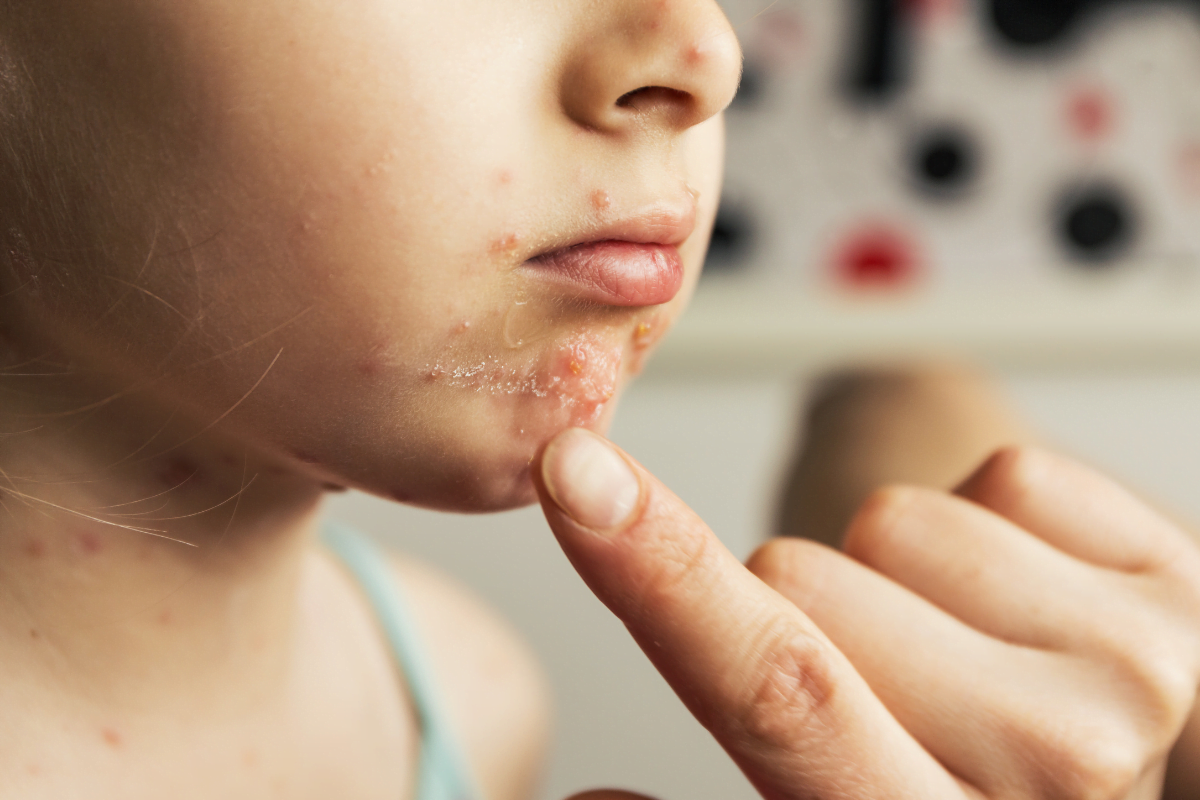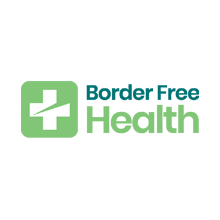Key Takeaways
- Same virus, different diseases: chickenpox and shingles share varicella-zoster.
- Shingles reactivates later in life and can cause nerve pain.
- Vaccines reduce illness risk and complications across the lifespan.
- Contagion differs: chickenpox spreads readily; shingles spreads by lesion contact.
- Early antivirals and pain control can limit symptom burden.
Many people compare chickenpox vs shingles and still feel uncertain about the connection. Both conditions stem from the varicella-zoster virus, yet they unfold differently. Chickenpox is the primary infection, often mild in children. Shingles is a reactivation later in life that can bring severe, nerve-related pain.
Understanding how these illnesses overlap—and diverge—helps you protect family and community. This guide explains symptoms, transmission, prevention, and practical care paths. We also address vaccine roles across ages and how to reduce the risk of complications.
Chickenpox vs Shingles: How They’re Connected
Chickenpox (varicella) and shingles (herpes zoster) come from the same virus, but they are not the same illness. After a person recovers from chickenpox, the virus can remain dormant in the dorsal root ganglia (nerve clusters). Years later, stress, immune changes, or aging can allow the virus to reactivate. Reactivation travels along a nerve path, producing shingles on one side of the body.
In contrast, chickenpox is a widespread first-time infection with many small, itchy blisters. It spreads easily through respiratory droplets and direct contact with lesions. Shingles causes a localized band-like rash and nerve pain, which can be severe. This difference matters because it changes who is at risk and how we prevent spread.
For a broader clinical overview, see Shingles for an overview of causes and stages on our condition hub: Shingles. That resource explains timelines and common complications in plain language.
Clinical Picture: Rashes, Pain, and Complications
Early shingles symptoms can include tingling or burning pain, low fever, and fatigue. A few days later, grouped blisters appear in a stripe on one side of the chest, face, or back. The rash often crusts over within 7–10 days, while nerve pain may linger. Chickenpox, by comparison, produces crops of lesions across the body, typically at different stages of healing.
Eye involvement (herpes zoster ophthalmicus) needs urgent evaluation because it can threaten vision. Facial nerve involvement may cause ear pain or facial weakness. In children and adults with weakened immunity, both varicella and zoster can be more severe. Because complications may be serious, timely assessment helps reduce long-term harm.
Complication Spotlight: Postherpetic Neuralgia
Postherpetic neuralgia is nerve pain that persists after the rash heals. It can feel like burning, stabbing, or electric shocks and may last months. Management focuses on nerve-calming medicines and gentle rehabilitation. For a framework on pain mechanisms, see our explainer on Neuropathic vs Nociceptive Pain, which clarifies why some pain lingers.
Some people may benefit from medications that modulate nerve activity. Options like Gabapentin can help reduce neuropathic pain intensity. If you are supporting an older adult, our guide on Managing Chronic Pain in Older Adults outlines practical strategies for sleep, function, and mood.
Transmission and Contagion: What Puts Others at Risk
People often ask whether is shingles contagious, and the answer requires nuance. A person with shingles cannot give another person shingles directly. However, contact with shingles blisters can transmit the virus to someone who never had chickenpox or its vaccine. That exposed person could then develop chickenpox, not shingles, after an incubation period.
Airborne spread is a major driver for chickenpox during primary infection. Shingles mainly spreads through direct contact with open lesions, although airborne transmission can occur in certain healthcare settings. Covering the rash and washing hands lowers risk to others. The CDC shingles guidance explains contagious periods and isolation steps in straightforward terms.
If you support someone with chronic immune suppression, take extra care. Keep lesions covered until they crust, and avoid direct skin contact. For clinical background about varicella transmission and susceptible contacts, see CDC varicella resources for practical control measures.
Vaccines and Prevention Across the Lifespan
Today’s chickenpox vaccine lowers the risk of primary infection and community outbreaks. It also reduces the pool of people who might later experience reactivation. Children typically receive two doses during early childhood, while unvaccinated susceptible adults can catch up. These steps protect families, newborns, and immunocompromised neighbors.
Understanding names helps when reviewing records. The varicella vaccine is often called the varicella vaccine or simply Varicella; abbreviations in schedules may appear as VAR. Timelines and catch-up guidance evolve as evidence grows. The U.S. immunization schedule provides up-to-date timing for different ages.
Side Effects and Safety Considerations
Most reactions to routine immunization are mild and short-lived. Local soreness, low fever, or a day of fatigue are common experiences. Rare adverse events can occur, so monitoring after vaccination makes sense. Discuss your history and current medications with a clinician to personalize the plan.
People also ask about chickenpox vaccine side effects because families weigh risks carefully. Reporting systems track patterns to ensure safety signals are investigated. When in doubt, checking reliable sources can calm uncertainty. Evidence-based guides help you balance personal needs with community protection.
Shingrix and Cross-Protection: What to Expect
Shingrix is an inactivated shingles vaccine recommended for many adults, including those with certain chronic conditions. It boosts immunity against reactivation and may lower the risk and duration of nerve pain. Most people experience temporary side effects like arm soreness and fatigue. Planning your schedule around these effects can make the process easier.
People often wonder does shingles vaccine protect against chickenpox. The shingles vaccine is designed to prevent reactivation rather than primary infection. Its role complements the varicella vaccine, which aims to prevent chickenpox early in life. For eligibility and dosing intervals, see CDC Shingrix recommendations for current details.
Triggers and Onset in Adults
Age-related immune changes and certain medications can increase reactivation risk. So can major stress, surgery, or other illnesses that alter immune balance. These factors help explain what causes shingles in adults, though not every case has a clear trigger. Good sleep, balanced nutrition, and stress reduction may support resilience.
People sometimes ask whether herpes viruses cause each other. Shingles comes from varicella-zoster (VZV), not herpes simplex viruses 1 or 2. The difference between herpes simplex and varicella-zoster matters for testing and treatment. When rashes involve the genitals or anus, compare patterns with our overviews of Genital Herpes Symptoms and Anal Herpes Symptoms to avoid confusion.
Diagnosis and Treatment Options
Clinicians usually diagnose shingles by the one-sided rash and pain pattern. Swab tests or blood tests may confirm the virus in atypical cases. Early antiviral therapy may help shorten the course and reduce complications. Pain management focuses on layered strategies that calm overactive nerves and protect sleep.
When discussing shingles treatment, clinicians may consider antivirals and supportive care. Antiviral options such as Acyclovir, Valacyclovir 500mg, or Famciclovir are commonly used; for topical lesions, see Zovirax Ointment for context on local therapy. These links provide product details you can discuss with your prescriber. Always review timing, interactions, and medical history before starting treatment.
For significant nerve pain after the rash, options may include nerve-modulating medicines and gentle rehabilitation. Some patients explore agents like Lyrica to help reduce burning or shooting sensations. If your immune system is affected by conditions like HIV, you may benefit from close follow-up; see our overview of HIV and AIDS Symptoms to understand related health considerations.
Exposure and Safety Around Others
People often ask how to protect vulnerable contacts at home. Keep shingles lesions covered and avoid direct skin contact until crusted. Hand hygiene matters, especially around infants, pregnant people without immunity, and those on immune-suppressing therapy. These steps reduce the chance of transmitting varicella to someone without prior protection.
Another common question is can you get shingles if you never had chickenpox. Without prior varicella infection or vaccination, exposure to shingles fluid leads to chickenpox, not shingles. After a natural infection or vaccination, the virus may establish latency and later reactivate as shingles. For general background and supportive resources, see our condition page: Shingles, which outlines risk groups and care pathways.
Recap
Chickenpox is a primary infection with diffuse rash; shingles is a reactivation with nerve pain. Transmission patterns differ, so prevention strategies do too. Vaccines reduce severe disease and help protect community members who face higher risks. Early evaluation and layered care can ease symptoms and lower complication odds.
Note: Staying informed helps you advocate for yourself and loved ones. When unsure, lean on credible sources and discuss options with a licensed professional.
Medical disclaimer: This content is for informational purposes only and is not a substitute for professional medical advice.

